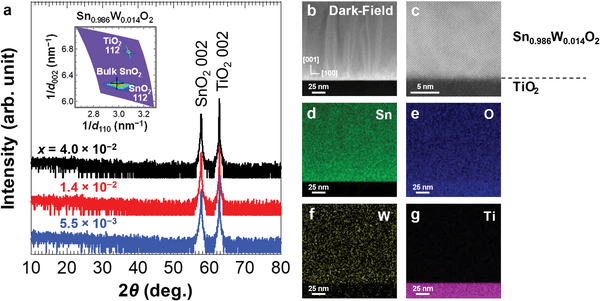

The University of Tokyo: To improve the efficiency of solar cells: Near-infrared light / solar cells
-Tungsten is added to tin oxide-
-Elucidation of the reason why infrared light is not reflected and becomes transparent-
University of Tokyo
Nagoya Institute of Technology
University of Tsukuba
For tin oxide used as a transparent electrode
With the addition of tungsten,
It becomes transparent without reflecting infrared light.
“The reason why it becomes transparent without reflecting infrared light” was clarified.
Scattering was suppressed by “hybridizing the electron orbitals of oxygen and tungsten in the crystal”.
This is “basic knowledge in the development of solar cells using near-infrared light”.
Solar cells using near-infrared light:
A “single crystal thin film in which tungsten was added as an impurity to tin oxide” was prepared.
Infrared light transmittance of about 80% with a wavelength of 2 μm,
It works as an electrode while transmitting infrared light.
This single crystal: why it is transparent to infrared light
“The reason why this single crystal is transparent to infrared light” was investigated.
Tungsten existed as “a pentavalent ion that is monovalent more than a tetravalent tin ion”.
This suppresses the scattering of ionized impurities.
Investigate by first-principles calculation:
“The reason why tungsten exists as a pentavalent ion” was investigated by first-principles calculation.
“The surrounding oxygen and electrons form a hybrid orbital and are stable.”
This suppresses the scattering of ionized impurities.
Improved performance of infrared transparent electrodes:
If this principle is used, the performance of the infrared transparent electrode is improved.
Improved power generation efficiency with infrared transparent electrodes:
Solar cells
By “using infrared transparent electrodes in addition to visible light”,
The power generation efficiency can be further increased.
New switch
Ligand Field‐Induced Exotic Dopant for Infrared Transparent Electrode: W in Rutile SnO 2
Abstract and Figures
Transparent conductive oxides (TCOs) exhibiting high near-infrared (NIR) transmittance
are one of the key materials for highly efficient thin-film solar cells with widened spectral sensitivity.
To realize excellent NIR transparency in a TCO film,
developing a dopant providing high mobility (µ) carriers is quite important.
Herein,
it is demonstrated that
W is a high-μ dopant in rutile SnO2, which is unexpected from the conventional strategy.A combination of electrical transport property measurements and hybrid density functional theory calculations
reveals thatW behaves as a singly charged donor (W⁵⁺) showing minimized ionized impurity scattering.
This charge state is realized by the splitting of the W 5d t2g-states originating
not only from the octahedral crystal field
but also hybridization with the O 2p orbitals,
whose contribution has not been considered in transition metal-doped TCOs.
Hybridization between metal d orbital and O 2p orbitals
would provide a new guide for designing a novel dopant of NIR transparent conductors.